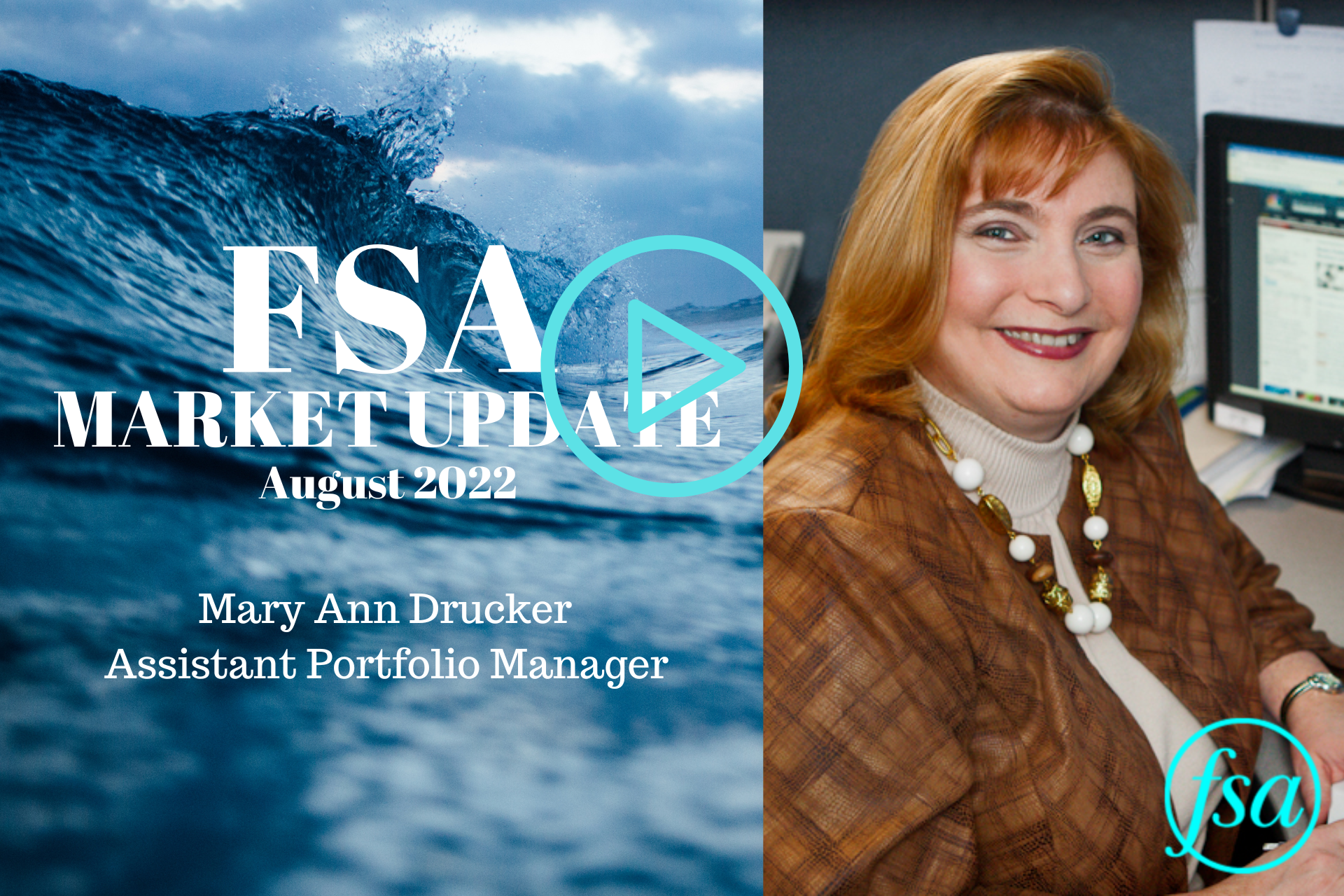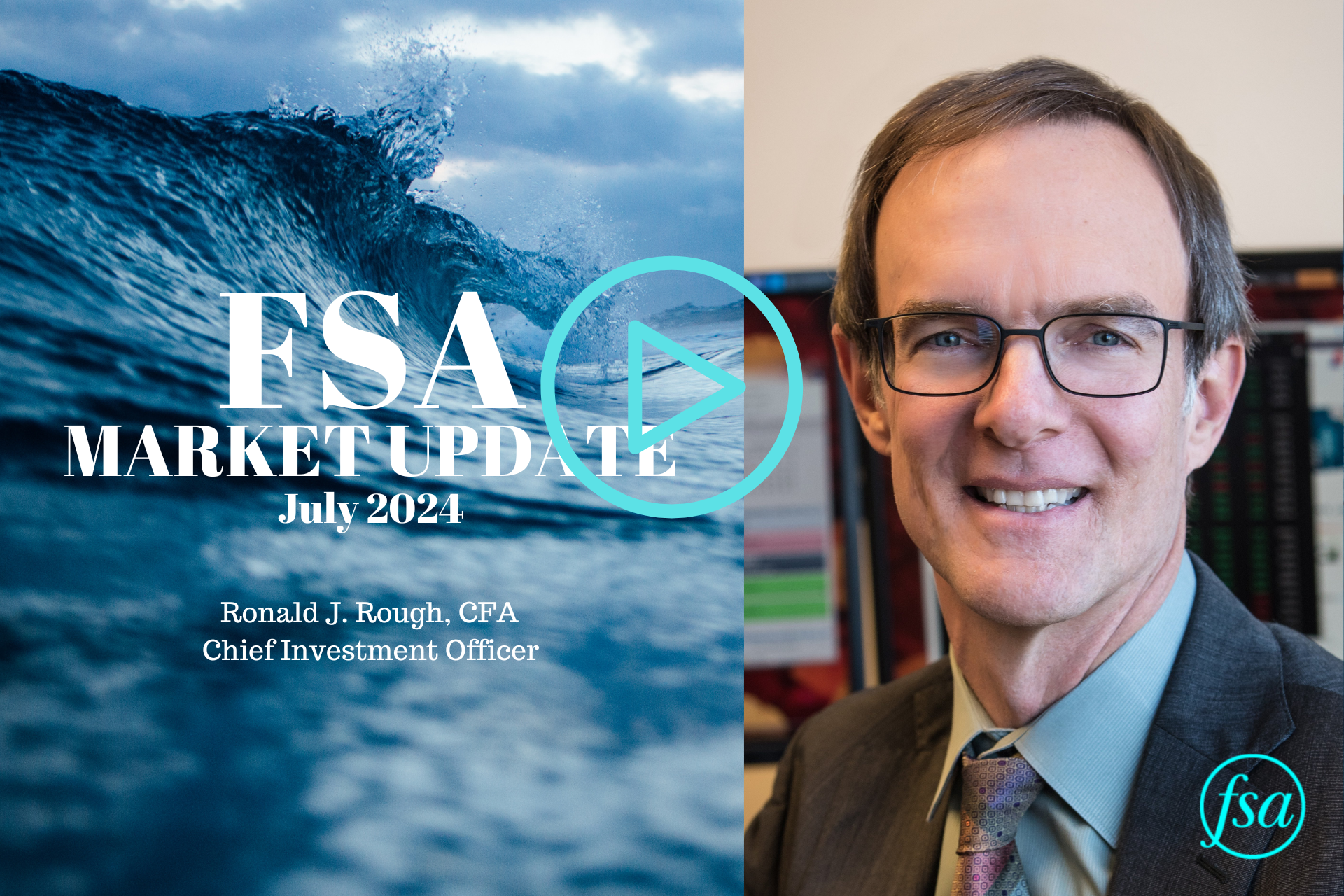Mary Ann Drucker, Assistant Portfolio Manager, presents our August video market update and shares what FSA is doing to respond.
August Stock Market Update Transcript
Hello, I’m Mary Ann Drucker here with our video market update for August 2022.
The last market update mentioned that in a midterm election year stocks often rally in the second half of the year after a weak first half. July certainly kicked off the second half in support of that historical trend as all the major U.S. indices had their best monthly gain since November of 2020. The areas that fall the hardest tend to be the ones that bounce back the most. Growth stocks outperformed value stocks. Small cap stocks also performed well, a healthy sign that the rally was broad based. But foreign stocks, though they bounced, trailed U.S. stocks. And finally, the U.S. bond market did very well, led by high-yield corporate bonds.
It’s not surprising that stocks rallied in July after an abysmal June when the S&P 500 officially fell into bear market territory. But the gain was impressive. The S&P 500 and Dow both recouped in July what they lost in June, and NASDAQ more than recouped its June loss in July. Though impressive, the gain in July merely brought stocks back to the same level they were at the end of May.
What spurred the July rally? Well, some investors were actually scratching their heads over this since nothing really had changed. Concerns over inflation, the economy, supply chain disruptions were still out there. But the bulk of the rally came in the latter part of the month as investors began to reset their very low expectations for the second half of the year.
And why did they do that? Well, earnings reports were mixed, which was actually a good sign because investors had braced for the worst and were expecting mostly negative results. The Federal Reserve hiked its benchmark interest rate by three-quarters of a percent, not 1% as some investors had feared. More importantly, Fed Chairman Powell indicated that the Fed could slow its pace of rate hikes, meaning the Fed might not need to be as aggressive going forward. All of those, combined with hopes that inflation might have peaked, helped to instill some optimism after the S&P 500 suffered its worst first-half performance since 1970.
That’s not to say that we’re out of the woods yet though. Second quarter GDP showed a decline of almost 1% after a negative first quarter. Two straight quarters of negative GDP growth are commonly considered a recession, but the official declaration has to come from the National Bureau of Economic Research. Nevertheless, the economy will certainly continue to be plagued by staffing and supply shortages.
A natural question might be how is FSA responding. The timing of when FSA redeploys cash as markets are coming out of a downturn varies among our strategies. Typically, as stocks begin to rally from a downturn, there are several fits and starts until stocks can finally gain their footing in a renewed uptrend. As a result, FSA will reinvest cash in a measured fashion. This involves first making a move in a strategy such as core equity where we’ll sell inverse positions and then establish a long equity position. Investors in core equity and tactical growth would’ve seen transactions at the end of July. If markets continue to rebound in August, then investors in our more conservative strategies, such as conservative growth and income and growth, will begin to see allocations back into equities and/or bond funds that tend to move up with equities.
Well, that’s it with this video market update. If you have any questions or comments, please don’t hesitate to reach out to us. Until next time, thank you for watching.
FSA’s current written Disclosure Brochure and Privacy Notice discussing our current advisory services and fees is available at www.FSAinvest.com/disclosures or by calling 301-949-7300.




